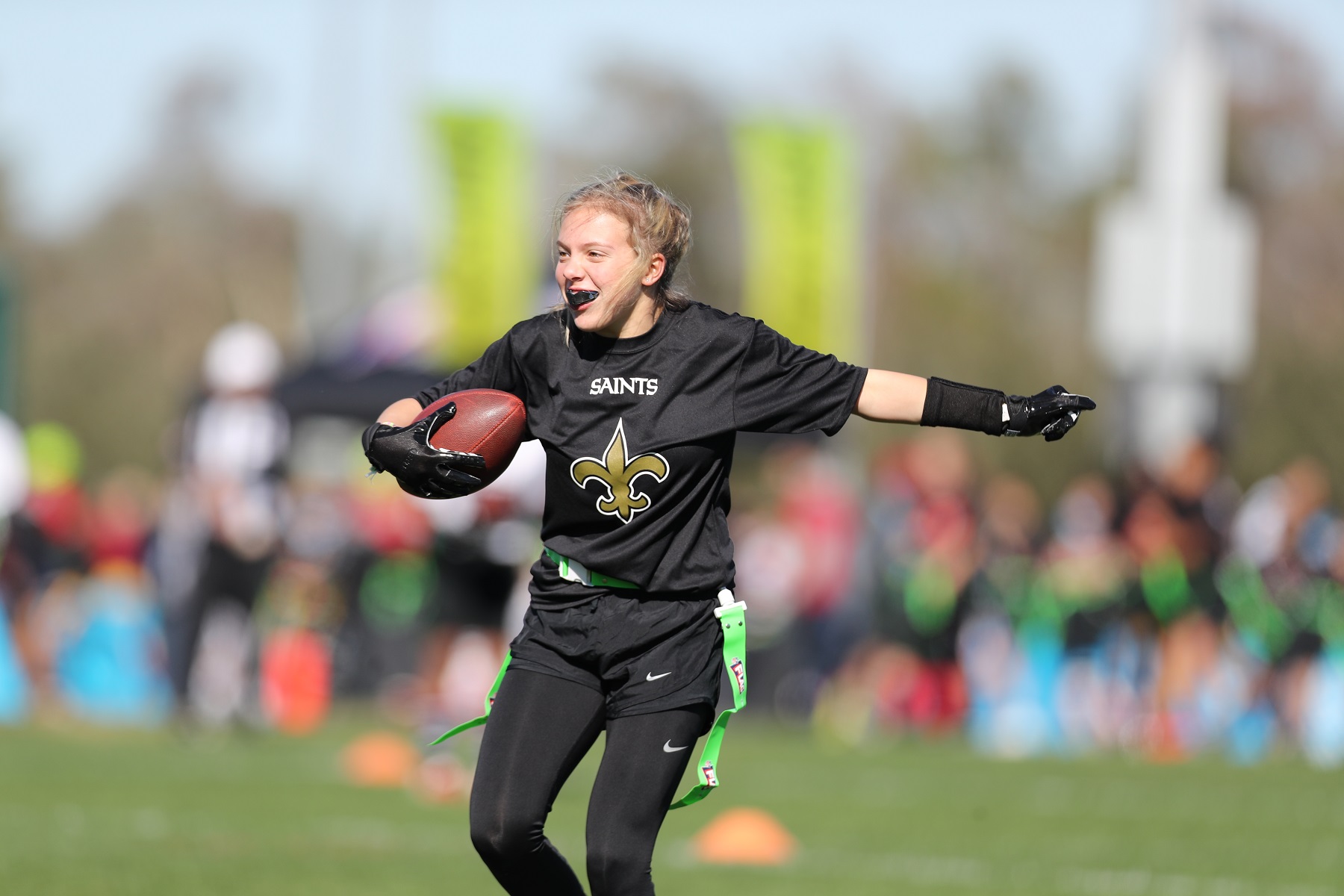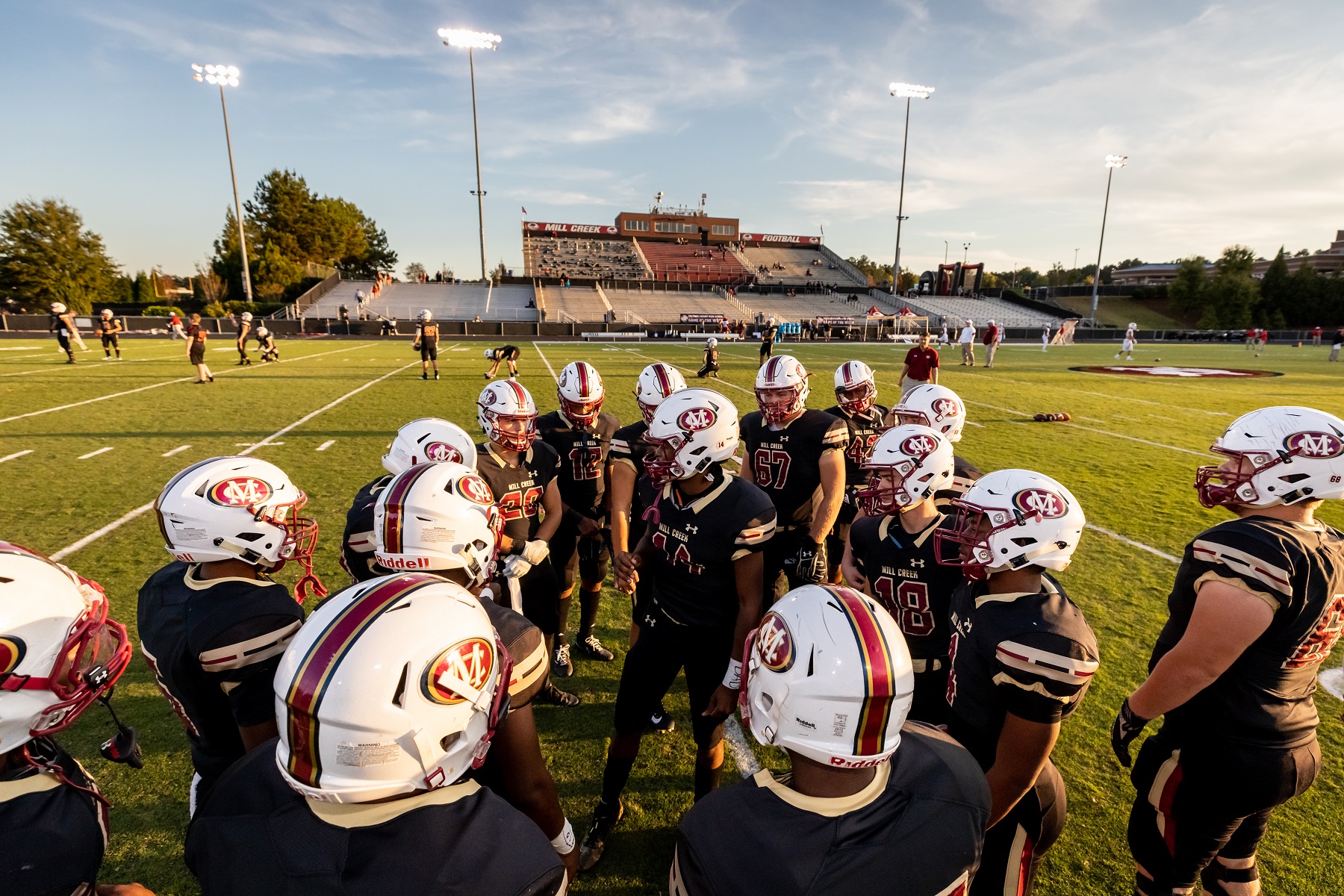Hydration
Staying hydrated before, during and after play is key for a healthy child. Help make it a habit. Learn the symptoms of dehydration and discover best practices for when and how to properly hydrate.
Kids take longer to cool down during activity than adults. That's why hydration is important.
It's not just about how your child hydrates during a game — hydrating before and after play is just as key. To properly hydrate, have your child drink 16–24 ounces of water before activity, then have them consume an electrolyte-packed sports drink or water every 15–20 minutes throughout play. A post-activity snack of chocolate milk can help replenish lost nutrients.
Symptoms of dehydration include feeling faint, intense thirst, headaches, nausea, and breathing faster and deeper than normal.
LEARN IT
Dehydration Symptoms
Keep an eye out for these symptoms:
- Feeling faint or lightheaded
- Headache
- Fever
- Extreme thirst
- Not urinating for long periods
- Nausea or vomiting
- Breathing faster or deeper than normal
- Skin numbness or tingling
- Muscle cramps or spasms
- Unusual fatigue
TEACH IT
Make Hydration a Habit
Let your kids know that hydration is important. Help keep your child hydrated — get them in the habit of drinking fluids every 20 minutes during activity and after it ends. Pair a favorite sports drink with a nutritious snack. On busy days, plan for extra hydration opportunities by drinking more fluids the night before or during breakfast.
DO IT
When and How to Hydrate
It's best practice to drink 16–24 fluid ounces of water 10–15 minutes before activity. During activity, hydrate with an electrolyte-packed sports drink or water every 15–20 minutes throughout play. After play wraps up, have your child enjoy a snack to help replenish nutrients lost during exercise.

Symptoms of Dehydration and How to Treat Them
Click on the symptoms below to learn more.
Heat syncope, or exercise-related fainting, is a condition where a person feels lightheaded or faints during or after strenuous activity in hot conditions. This occurs when blood pools in the lower extremities, reducing blood flow to the brain. It’s often triggered by standing up quickly, prolonged standing, or sudden changes in posture in high temperatures.
Symptoms: Dizziness, lightheadedness, fainting.
Treatment: Move the person to a shaded or cool area, have them lie down, and elevate their legs to improve blood circulation back to the heart. Hydrating and resting are key to recovery. Prevention includes staying hydrated, acclimating to the heat gradually, and avoiding sudden changes in posture during physical activities in hot environments.
Heat exhaustion occurs when the body overheats due to prolonged exposure to high temperatures, especially during physical activity. It happens when the body’s cooling mechanisms, like sweating, become overwhelmed, leading to dehydration and a drop in energy levels.
Symptoms: Heavy sweating, weakness or fatigue, dizziness or fainting, nausea or vomiting, headache, cool/clammy skin.
Treatment: Immediately stop all activity and move the person to a cooler, shaded area. Encourage hydration with water or electrolyte-rich drinks. Have them lie down with legs elevated and apply cool, wet cloths or ice packs to help lower body temperature. Prevent heat exhaustion by staying hydrated, wearing light clothing, taking breaks, and avoiding strenuous activity during the hottest parts of the day.
Heat cramps are painful, involuntary muscle spasms that occur during or after intense physical activity in hot environments. They are often caused by the loss of fluids and electrolytes (such as sodium) through heavy sweating, leading to muscle imbalances.
Symptoms: Painful, involuntary muscle cramps, typically in the legs, arms, or abdomen, muscles feeling hard or knotted, possible mild dehydration and fatigue.
Treatment: Stop physical activity and move to a cool place. Rehydrate with water or an electrolyte-rich sports drink to restore fluid balance. Gently stretch and massage the affected muscles. Applying ice to the cramped area may also help relieve pain and relax the muscles. Prevent heat cramps by staying well-hydrated, consuming electrolytes, and taking breaks in the shade during intense exercise in hot weather.
Heat stroke is a severe, life-threatening condition that occurs when the body’s temperature regulation fails, causing the core body temperature to rise above 104°F (40°C). It is the most serious form of heat-related illness and requires immediate medical attention. Heat stroke can occur after prolonged exposure to high temperatures or intense physical activity in the heat.
Symptoms: High body temperature (104°F or higher), altered mental state (confusion, agitation, seizures, unconsciousness), hot, dry skin (may also be damp if caused by exertion), rapid heartbeat, nausea or vomiting, shallow, rapid breathing.
Treatment: Call 911 immediately and activate your emergency action plan if heat stroke is suspected. While waiting for help, move the person to a cool or shaded area, remove excess clothing, and cool the body using cold water, ice packs, or wet towels. Focus on cooling the neck, armpits, and groin areas. Avoid giving fluids if the person is unconscious or unable to drink. Heat stroke can be prevented by staying hydrated, wearing light, breathable clothing, taking breaks, and avoiding strenuous activities in extreme heat.
Learn the best ways to prevent, identify, assess and treat heat stroke in this NFL webinar.
Nutrition
Eating right is just as important to being successful on the field as practicing plays and running routes. Check out these quick, simple nutrition tips to help keep your kids healthy, energized and to set them up for success.

Fuel Up for Gameday
Help get your child ready for gameday with these simple nutrition tips.
STEP 1
Carb Up
In addition to hydrating, kids should eat a meal two to four hours before they take the field. Focus on foods high in protein, antioxidants (like blueberries or strawberries) and carbohydrates.
STEP 2
Bring Snacks
Plan ahead — bring a small, light snack or sports drink for your child to have 30–60 minutes before kickoff.
Snacks on the Sideline
Keep a few snacks on the sideline for halftime and breaks in the play. Here are a few easy options to help kids refuel:
- Bananas
- Dried fruit
- Fig bars
- Fruit rope
- Granola bars
Foods to Avoid
Eating right is key to a healthy child. These are a few types of food to avoid.
- Fatty and fried foods: Greasy foods, like hamburgers and french fries, are difficult to digest and will sit in your child's stomach during play.
- Protein shakes and bars: While protein plays an important role in your child's overall diet, they should not consume a large quantity right before a game.
- Artificial sweeteners: These will stress your child's digestion and could lead to an upset stomach during a game.
Information on this page is courtesy of the USA Football Parent Guide.































